Text
Artist Research #8: Nancy Goldin
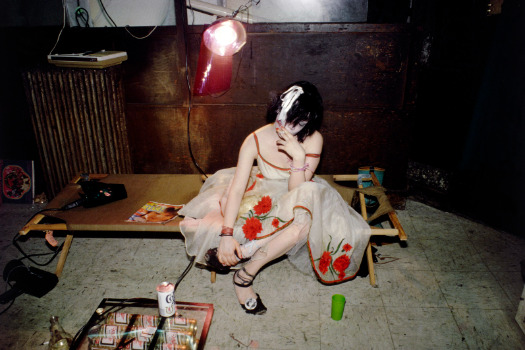
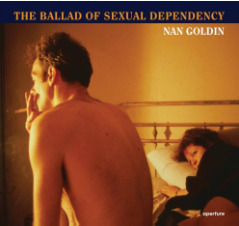

Introduction/Background:
Nancy Goldin, or Nan, is an American photographer and activist and was born on September 12, 1953. She lives and works in New York where most of her work focuses on exploring moments of intimacy, cultures of the LGBT community, and the HIV/AIDS crisis. These follow the themes of “identity, love, sexuality, addiction, and mortality” (Gagosian, About). Although she lives in New York now, she grew up in Washington D.C. and later moved to Massachusetts at the age of 16 where she was enrolled to attend Satya Community School. It was while she was there that she acquired her first camera. Early on in her career as a photographer, she mainly took black and white photographs that showed the joy and beauty of her friends in the transgender community in Boston. When she finally moved to New York in 1978, she became involved in the downtown New Wave scene where she documented members of “a milieu of New Wave clubs, No Wave cinema, and post-Stonewall gay culture” (Gagosian, About). These moments were ones of revelry and friendship as well as intimacy and loss. In recent years, she has made a shift with her focus turning towards capturing natural light, the landscape, and the sky in her photos.
Notable works:
Out of all of her work, The Ballad of Sexual Dependency is Goldin’s most notable. It was first published to the world in 1986 and this work acts like a visual diary depicting her own experiences in Boston. This specifically includes “the struggles for intimacy and understanding among the friends and lovers whom Goldin describes as her ‘tribe’” (Aperture, Description). This book takes both a personal and universal understanding of the different ways men and women interact. This project consists of almost 700 snapshots and sequenced with a reminiscent music soundtrack. Goldin wrote, ““The Ballad of Sexual Dependency is the diary I let people read. The diary is my form of control over my life. It allows me to obsessively record every detail. It enables me to remember.” This work is also titled after a song from the opera, The Threepenny Opera and even the essence of the photos are very downtown opera.
Awards/Nominations:
Nan Goldin has been recognized a few times for her work. These include the following:
2006: Ordre des Arts et des Lettres.
2007: Hasselblad Award.
2012: 53rd Edward MacDowell Medal, MacDowell Colony, Peterborough, NH.
2018: Royal Photographic Society Centenary Medal and Honorary Fellowship
2023: Academy Award for Best Documentary Feature – All the Beauty and the Bloodshed
Personal thoughts:
From what I’ve seen of Goldin, I find her as a photographer very unique. It’s hard to find photographers who represent sexuality in the way that she does and even openly show LGBT relationships in her photographs. I also really like her photographic process by including moments in her life. I feel like that’s the easiest way to photograph when it’s about yourself, but at the same time the hardest to accurately represent at times. I feel like if I were to ever do photography again I would most likely document my life like Nan Goldin does and I can see myself just using a lot of her techniques as well.
Works Cited:
https://en.wikipedia.org/wiki/Nan_Goldin
https://www.moma.org/calendar/exhibitions/1651
https://aperture.org/books/the-ballad-of-sexual-dependency/
https://gagosian.com/artists/nan-goldin/
0 notes
Text
Artist Research #7: Alec Soth


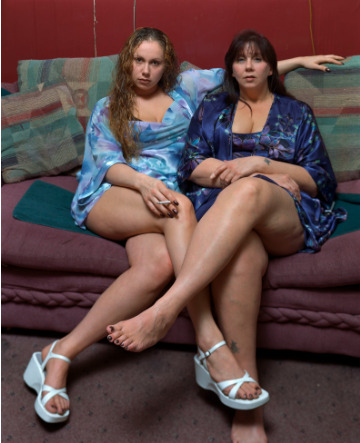
Introduction/Background:
Alec Soth is an American photographer born in 1969 in Minneapolis, Minnesota. Throughout his career as a photographer, he has published over 25 books and done over 50 solo exhibitions. Growing up he was known to be very shy during school, but nevertheless he successfully studied and graduated from Sarah Lawrence College In New York. His photographic style is documentation and with this style he is concerned with “mythologies and oddities that proliferate America’s disconnected communities' ' (Magnum, profile). His projects tend to feature the midwest in America in a large scale format. Soth’s view of photography is very unique with his work being compared to works of literature, but Soth believes photography to be more fragmented; “It’s more like poetry than writing a novel” (Magnum, profile).
Notable works:
Alec Soth’s Sleeping by the Mississippi is one of his most defining photo book publications. Published in 2004, this was Soth’s first book and established him as one of the leading figures of photographic practice. This photo book depicts a series of road trips along the Mississippi river. To show these road trips, he photographs a mix of individuals, landscapes, and interiors that all convey the mood of loneliness and longing. Sloth merges a “documentary style with poetic sensibility” (Mackbooks). He first began to get the idea for this project when he began to get influenced through seeing the tradition of road trip photography. He decided to make this his own tradition and started following the Mississippi river in the car. He used the river as a way to connect with the people he photographed along the way. His strategy was to stop his car as soon as someone or something caught his eye, although this didn’t go exactly as planned since the photos he ended up taking weren’t what he envisioned. He eventually was able to capture what he wanted when he met the people along the Mississippi and they let him into their homes.
Awards/Nominations:
Alec Soth has won many awards in his life so far. A few of these awards include the following:
1999: McKnight Foundation Photography Fellowship, Minneapolis, MN.
2001: Travel and Study Grant, Jerome Foundation, for Sleeping by the Mississippi.
2003: Santa Fe Prize for Photography.
2004: McKnight Foundation Photography Fellowship, Minneapolis, MN.
2006: Finalist, Deutsche Börse Photography Prize. A £3000 prize.
2008: Bush Fellowship, Bush Foundation, Saint Paul, MN. A $50000 grant.
2013: McKnight Foundation Photography Fellowship, Minneapolis, MN.
2021: Honorary Fellowship of the Royal Photographic Society, Bristol
Personal thoughts:
From researching Alec Soth and his work, I feel like his process of taking pictures is similar to mine, especially with how he took the photos for his project Sleeping by the Mississippi. Oftentimes I don’t have a set plan for how my pictures are going to look or even what pictures I will be taking at all. I did this for the scavenger hunt assignment, which I walked around Fresno State as well as my house looking for anything that stood out to me. I take a lot of comfort in the way he does this and even the fact that he almost didn’t stick with photography comforted me in a way as well. This gives me hope that even if I’m discouraged about how my photos look now, I know that if I keep on going I can accomplish everything I want to achieve.
Works cited:
https://www.magnumphotos.com/arts-culture/alec-soth-sleeping-by-the-mississippi/
https://www.magnumphotos.com/photographer/alec-soth/
https://www.mackbooks.us/products/sleeping-by-the-mississippi-br-alec-soth
https://alecsoth.com/photography/about
https://en.wikipedia.org/wiki/Alec_Soth
0 notes
Text
Artist Research #6: Bruce Gilden

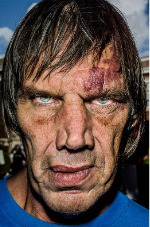
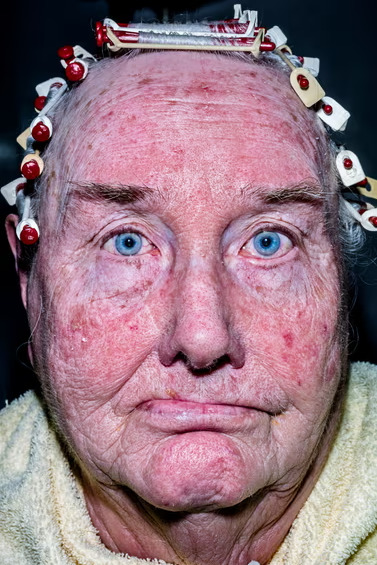
Introduction/Background:
Bruce Gilden is an American street photographer born in 1946 in Brooklyn, New York. He is most known for his up-close candid shots of people walking the streets of New York City. His love for the arts started at the age of 18 when he began visiting museums with beautiful paintings in them. From these frequent museum trips, Van Gogh became a figure that eventually inspired to be a photographer. This was because all of his paintings had dramatic striking colors, even though photography at the time was black and white. He wrestled with the idea of becoming an actor until he settled with photography and purchased his first camera. He always had a fascination with his surroundings, therefore he decided to document it through photography. He’s almost entirely self taught with style being very distinct. Gilden focused on getting “graphic and often confrontational close-ups made using flash” (Magnum), In order to establish a feeling of “intimacy and directness.” All of his photographs portray marginalized and neglected communities which is evident by looking at his photos. The photos make the subject look exposed in a way and without a filter which has caused some controversy in the past. In fact, American photographer Joel Meyerowitz called Gilden “a fucking bully” who only wants to embarrass and humiliate people with this “in your face” strategy he has with all of his publications. It seems though with the type of people he’s photographing he could be instead of humiliating them, just bringing awareness to these mistreated and forgotten communities.
Notable works:
One notable work of Bruce Gilden is his photo book titled Haiti. This was published in 1999, and like his other works this one has the same up close shots present throughout. For some background information, Haiti is a poor Caribbean nation and with this publication, Gilden’s goal was not to flatter the subjects, rather to cause a “visceral reaction” to the photos. This gives the viewers a “mysterious, unsettling, but profound glimpse into the ‘otherness’ of the native population of this storied Caribbean nation” (Street photography, submissions).
Another notable work of Gilden is Facing New York, published in 1992. This was Bruce Gilden’s first major publication during his career, and is now recognized as one of the classics. This project seeks to capture New York City as the days naturally play out, in order to capture the unique energy of the streets. In capturing New York as it is, he also wants to uncover the humanity underneath their shell of persona. To do this, confrontational “in your face” photos are taken of people that expose their true form without it looking perfected or edited.
Awards/Nominations:
Bruce Gilden has won many awards in the past. These include some of the following:
1979: Artist's Fellowship, New York Foundation for the Arts, New York.
1980: Photographer's Fellowship, National Endowment for the Arts.
1984: Photographer's Fellowship, National Endowment for the Arts.
1992: Artist's Fellowship, New York Foundation for the Arts, New York.
1996: European Publishers Award for Photography for Haiti.
1999: Artist's Fellowship, from the Japan Foundation, for Tokyo Extremes.
2013: Guggenheim Fellowship from the John Simon Guggenheim Memorial Foundation.
Personal thoughts:
This photographer was by far the most unique one I’ve researched so far. When I first found him, I thought the same way that many of his critics thought, which was that he’s “embarrassing” and “humiliating” people on purpose for his own personal game. But in photography, sometimes that truth isn’t always gonna be pretty and most of the time in order for a photograph to be effective, there needs to be some ugly and sometimes graphic images that directly communicate something. This is clearly what Gilden’s purpose in his photos are, to spread awareness. I also found his work to be inspiring in a way. This is because I struggle with taking photos and I’ve realized that it’s because I haven’t been getting close enough or zooming in enough to really capture the essence of what I’m trying to communicate. His is a very exaggerated example of closeness, but the idea is still that simply zooming in or getting closer shows the emotion and message more clearly.
Works cited:
https://www.dewilewis.com/products/facing-new-york
https://en.wikipedia.org/wiki/Bruce_Gilden#Publications_with_contributions_by_Gilden
https://streetphotography.com/bruce-gildens-haiti/
https://independent-photo.com/news/bruce-gilden/
https://store.magnumphotos.com/collections/bruce-gilden
0 notes
Text
Artist Research #5: Danny Lyon

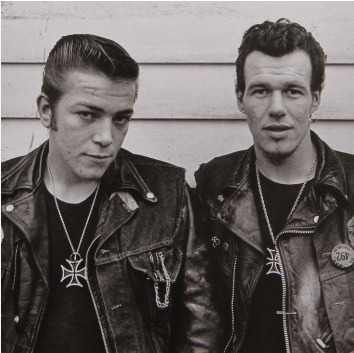
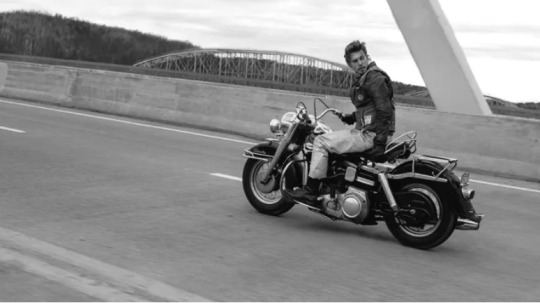
Introduction/Background:
Danny Lyon is an American born photographer and filmmaker born on March 16, 1942 and raised in New York. Lyon’s work is primarily influenced and inspired by his Jewish identity, especially since he grew up around the time of World War II. He first got into photography when he hitchhiked to Cairo, Illinois during the summer of 1962. He then went to college at the University of Chicago in 1963 where he received a BA in history. During his time at the University he was hired as a photographer at the Student Nonviolent Coordinating Committee (SNCC). Under this committee, Lyon spent two years photographing activists of SNCC fighting against racial violence and discrimination. These photos and many others were very influential in that they promoted change and improvement in society. Thanks to him, “SNCC began to develop its public image” (Sncc digital, people). Lyon even helped young teenage girls, deprived of food and water, escape from jail through his bravery of secretly taking photos of them. It sounds a little creepy, but his intentions were pure and for the right cause. Danny Lyon takes a very personal approach to his photographic work by participating in the lives of his subjects. In his older work, Lyon used to purposely withhold showcasing his personality in his photos because he wanted his subjects to shine through. But now he acquires first hand knowledge of the experiences that the subject encounters, which gives his work a personal touch to them. The subjects of his photographic work typically, “deviate from societal norms, yet he is dedicated to communicating their character and sensibility honestly, sympathetically, and nonjudgmentally” (icp, biography).
Notable works:
His photobook The Bikeriders (1968) is a good example of what his main focus in photography is; civil rights issues. This project was seen as one of the most defining works of the 1960s and also gave younger photographers a voice to look up to that was their age. This book depicts the Chicago Outlaws Motorcycle Club’s first hand stories and personalities. Lyon was personally involved in the Outlaws at one point in his life, so he wanted to share about himself while also speaking on issues about how America views and treats those on the outskirts of society. He does this by offering a “gritty yet humane perspective” of these individuals.
Awards/Nominations:
Danny Lyon has won a total of 6 awards in his lifetime. These include the following:
1969: Guggenheim Fellowship from the Solomon R. Guggenheim Foundation
1978: Guggenheim Fellowship from the Solomon R. Guggenheim Foundation
1980s: Fellowship in Film making from the Rockefeller Foundation[citation needed]
2011: Missouri Honor Medal for Distinguished Service in Journalism, Missouri School of Journalism, University of Missouri, Columbia, MO
2015: Lucie Awards, "Achievement in Documentary" category
2022: Induction into the International Photography Hall of Fame and Museum.
Personal thoughts:
From researching Lyon, I have really come to respect him and his work and what it means. He has done a lot of good for society through his photographs, which I think makes him one of the best photographers. If I have learned one thing from this class, it’s that photography tells a story and communicates a message meant to move and challenge viewers' ways of thinking. It’s more than just showing a pretty flower or a cute dog, but taking photos in a way that is moving and meaningful. It is evident that Lyon takes photos in that way. Even through making projects that focus on himself, he is able to point out and challenge ideas of overarching problems in society. I can see myself using his influence to create captivating interior spaces in the future. Not only that but he has influenced me to think critically about the sort of spaces I will be creating. I want to start thinking about the purpose I will have for designing interiors, and what I will do to make them personal to me in a way that’s also personal to the client.
Works Cited:
https://www.icp.org/browse/archive/constituents/danny-lyon?all/all/all/all/0
https://snccdigital.org/people/danny-lyon/
https://en.wikipedia.org/wiki/Danny_Lyon
https://books.google.com/books/about/The_Bikeriders.html?id=VWqCngEACAAJ&source=kp_book_description
0 notes
Text
Extra Credit Assignment: Hike at Pincushion Trail

We just arrived and there are already amazing views.
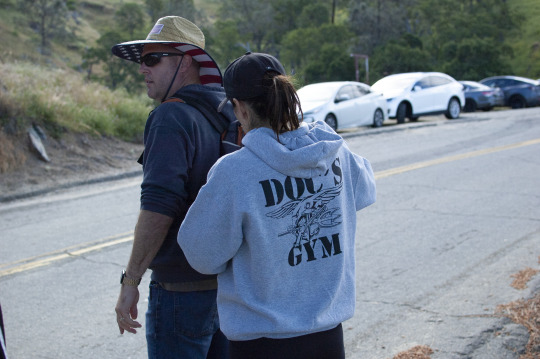
Applying sunscreen and putting on backpacks are done before we start the hike.

The entrance to Pincushion trail decorated with stickers.
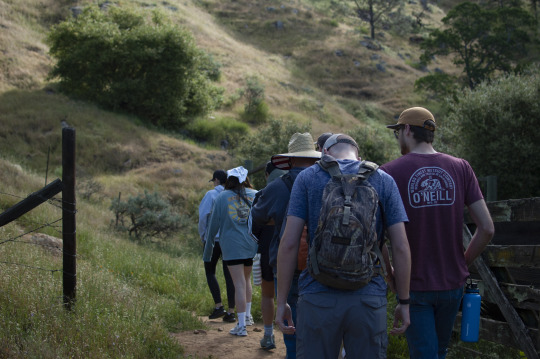
The first mile of this hike is steep and about to be exhausting.
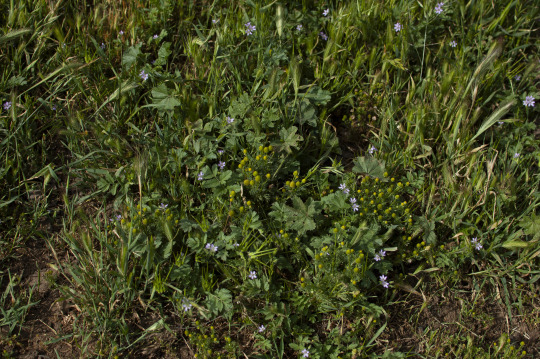
This trail is covered with a bunch of these little yellow flowers.
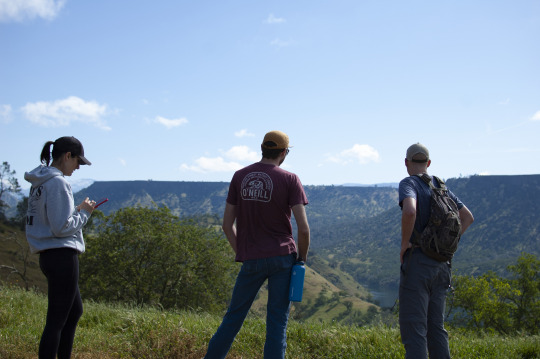
First break of the hike. Everyone is sweaty and out of breath, but this view is just as breathtaking.
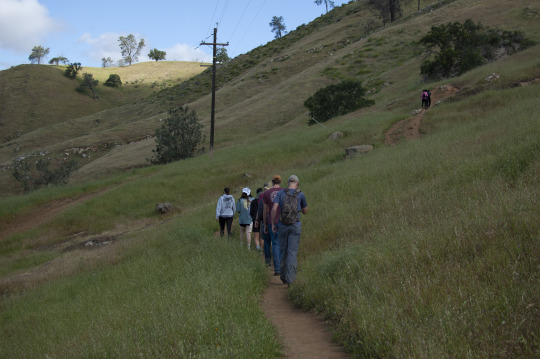
Break over. 1 mile down, 1 more to go.
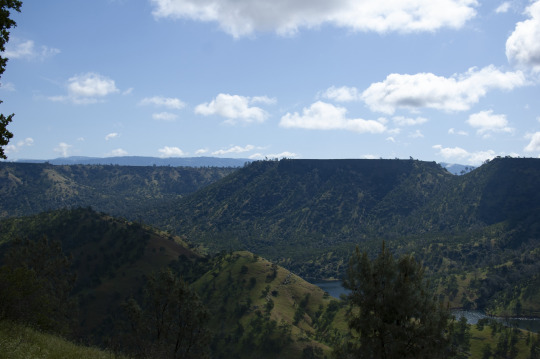
The mountains in the distance are known as the Big Table Mountain Peak because of the flat tops. At first glance I thought the mountains were 1 dimensional.

These are two of the people I went on the hike with. Both are from my church and I talked with them the most during this trip.

More flowers! These are by far the prettiest flowers I saw on this trail.

We are almost to the end. Pictured here is the top of the trail, which looks like a pincushion since it comes to a point.
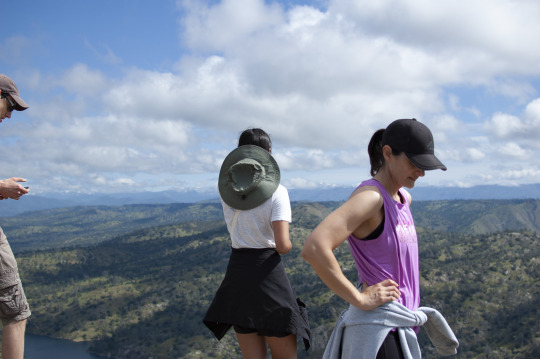
Here we are at the very top. Everyone, including myself can't keep our eyes off this view.

These two went ahead of the group and we found them sitting here at the top waiting for us.

The view we hiked a little over 2 miles for. Very beautiful.
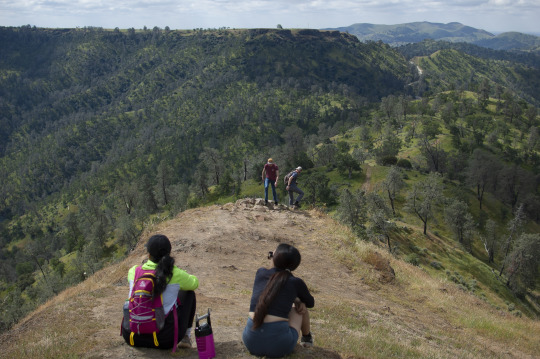
The last picture I took before we had to head back. This was fun.
0 notes
Text
Artist Research #4: Carrie Mae Weems
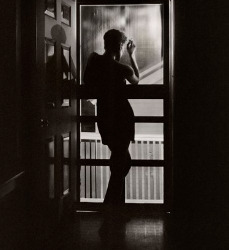
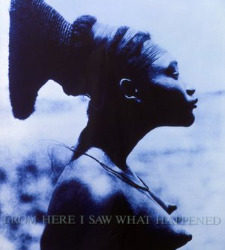
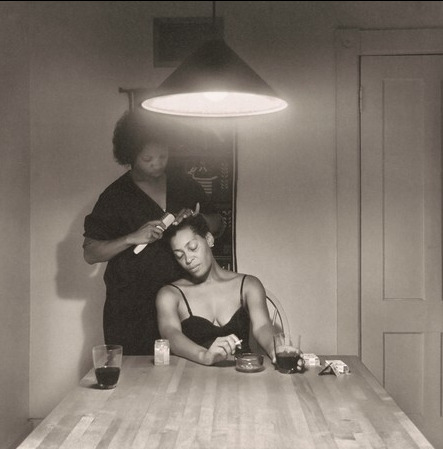
Introduction/Background:
Carrie Mae Weems is an American artist who is best known for her photography. She was born in 1953 in Portland, Oregon where she became interested in dance at an early age. At the age of seventeen she joined an experimental dancer’s workshop in San Francisco and later in 1976 she moved to New York where she took a photography class at the Studio Museum in Harlem. Finally, she studied folklore in graduate school and began her work in photography, video, and art. Weems’ work focuses on “questions about race, gender, and class inequality” (Guggenheim), which brings attention to marginalized groups whose experiences are often disregarded. Although she does this in all of the works she creates, Weems saw photography as having the most potential to “reformulate black cultural mythologies while dismantling negative societal preconceptions” (Guggenheim). This resonates deeply with her as a black woman and many others struggling against racial, temporal, and socioeconomic boundaries.
Notable works:
Although she has many pieces of artwork, her photographic work remains some of her most prominent pieces during her career. Her landmark piece, however, is known as Kitchen Table Series, which was published in 1990. This project uses “images and screen printed text panels to offer a polyvalent portrayal of the modern black woman” (Guggenheim). She uses her own identity as a black woman to point out a number of issues with how women are viewed. This includes the differing opinions on women by other people, women’s ability to enjoy their own bodies, and how women construct themselves and their image. This is done by creating a staged photographed fictional drama in which she is playing the lead role. This setup creates an entire world invented by Weems with the setting always remaining the same. There’s a lot about this series that sets it apart from other photographic works I have researched, but the title of this series is what’s most eye-catching to me. The title, Kitchen Table Series refers to the false understanding that the kitchen is not an important space because it is traditionally meant for females. Weems uses this idea and turns it on its head. She suggests that “the kitchen table is the real stage where life’s biggest moments play out, and where the full range of human emotions is expressed” (National Gallery of Art). This is very progressive thinking for that time period, and it makes the title of this project even more impactful. Looking at the images in this series was really powerful for me as a viewer to see, since it depicts so many moments in a woman’s life, specifically black women, that give womanhood complexity, strength, and beauty.
Awards/Nominations:
Her awards and nominations are numerous and many honorary degrees are attached to her name. To name a few she received honorary degrees from California College of the Arts in 2001 and Colgate University in 2007. Since she has one so many awards it would take up too much space to list all of them, but some of her achievements include the following:
Photographer of the Year by the Friends of Photography
2006: Rome Prize Fellowship
2007: Anonymous Was A Woman Award
2013: Congressional Black Caucus Foundation's Lifetime Achievement Award
2013: MacArthur Fellow, "Genius" Award
2014: BET Visual Arts Award
2015: W. E. B. Du Bois Medal from Harvard University
2015: Honorary Doctorate from the School of Visual Arts
Personal thoughts:
I was a bit skeptical about researching her since she wasn’t primarily a photographer, but she has many photographic works under name that are very impressive and well composed. I admire the direction she goes with her career and the change that she promotes. Seeing her represent not only women, but black women is very influential considering the time that many of her works were published. The way in which she photographed her art is very unique as well and gives me a new perspective on how photography works and how it can be photographed in various different ways and still leave a lasting impression on the audience. She is my favorite artist I have researched so far and I can’t wait to see all the other works she has put out into the world.
Works cited:
https://art21.org/artist/carrie-mae-weems/
https://en.wikipedia.org/wiki/Carrie_Mae_Weems#Awards
https://www.nga.gov/collection/art-object-page.209288.html
https://www.moma.org/artists/7177
https://www.guggenheim.org/artwork/artist/carrie-mae-weems
0 notes
Text
Artist Research #3: Adam Magyar

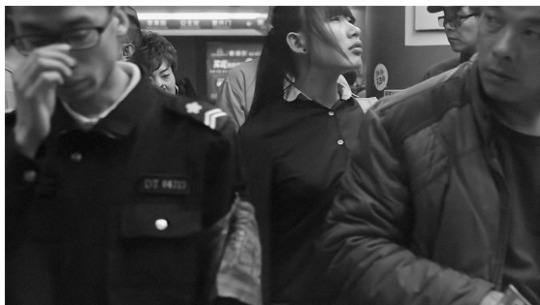
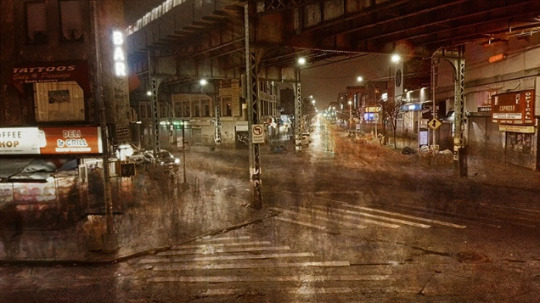
Introduction/Background:
Adam Magyar is a Hungarian artist based in Berlin. He was born in 1972 and didn’t originally have any intentions of pursuing photography as a career, and instead wanted to be an engineer. He started taking photographs after visiting India and seeing places where bodies were cremated after death. Seeing life and death take form gave him an interest in people and photographing them as they were. Magyar explains during a lecture at Fresno State that, “Photography is the way we think about time and memories; we emphasize things.” This is how he has taken photos for his entire career, which has garnered him international recognition in various solo and group exhibitions. He particularly emphasizes in his work people in circumstances that they do not belong and doing this by observing, “time flowing by and life pulsating in front of his eyes” (Stephen Bulger Gallery, Bio). He also likes to capture images of a constant never ending flow of people in daily life. In fact, many of his better known photographs were created using this technique.
Notable Works:
From looking at Adam's website, it is evident that he is very talented in what he does. I found influence in much of his work as well. One work of his that stood out to me the most and seemed like one of the most prominent projects of his is Squares. This one stood out to me for multiple reasons. First, the perspective and angel it was taken from was very unique to me. Most of his photos focused on capturing moments in front of him, but this picture captured the camera looking down at people walking from a higher point. Secondly, the colors are a lot more vibrant and lively than the consistent black and white aesthetic found in most of his other photos. To me it felt like that there was a lot of meaning behind the images but according to Magyar, “he never thought Squares had deep meaning despite its visually pleasing aesthetic” (Phoblographer). Although this photo does intend to compel the audience to wonder where, when, and how all of his images were shot? The colors of this shot add a nostalgic and peaceful feeling to the aesthetic of the photos. Magyar is specifically reminded of “Where’s Waldo” because of the various people present in one area. Overall all of his works are highly dependent on his techniques with light, movement, color, and the overall aesthetic to create something thought-provoking for the viewers.
Awards/Nominations:
Adam Magyar has won a total of 2 awards and 1 scholarship. These include the following:
'2009 International Photography Award, 1st place in Fine Art - Collage subcategory for Squares, 1st place in Special - Aerial subcategory for Squares,[47]
2006-2007 Jozsef Pecsi Scholarship,
2004 Grand Prize, Hungarian Press Photo
Personal thoughts:
I have learned a lot from Adam from watching the video lecture and also simply observing all of his work on his website. Seeing how much he focused on capturing the continuous movement of humans reminds me of an example similar to this in the world of interior design. There is a building (I don’t know where) that has many digital walls all throughout the inside walls. These screens respond to the movement of people around them, and in turn move with them. For example, there was an archway with autumn leaves on a tree and as a person walks underneath the arch, the screen will sense this movement and respond by making the leaves fall at the same time she passes by. This has the same idea that Adam has, but instead of capturing it in photography it has been adopted by interior designers in their own designs. This is an idea that is futuristic and pushes creativity to a new height. Having the same mindset as Adam in how to capture an image effectively, also inspires me to try the same in my own work. If myself and others continue this mindset, great developments in the world of art can start to be made in order to create a better future.
Works Cited:
https://en.wikipedia.org/wiki/Adam_Magyar
https://www.thephoblographer.com/2022/03/06/how-adam-magyar-shot-squares-a-series-of-beautiful-photographs/
http://www.magyaradam.com/wp/?page_id=810
https://www.bulgergallery.com/artists/144-adam-magyar/biography/
0 notes
Text
Artist Research #2: Robert Frank
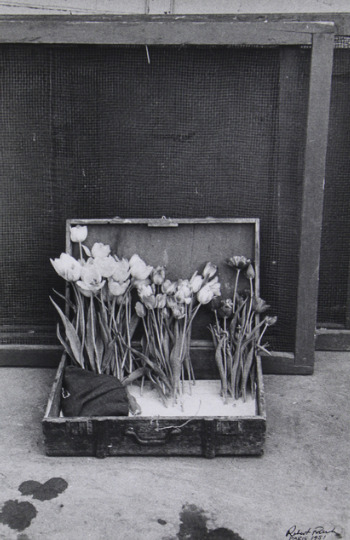
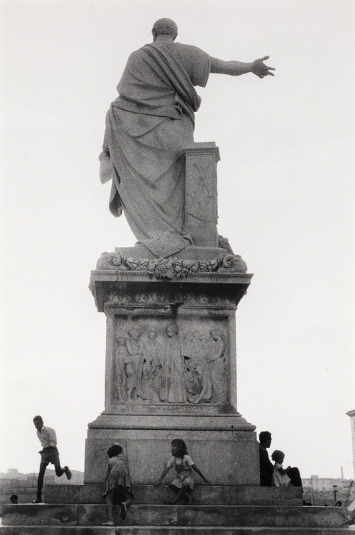

Introduction/Background:
Robert Frank was an American filmmaker and photographer born in Switzerland in 1924 and died in 2019. He began to take interest in photography early on in life and became an apprentice under several photographers as a teenager. Later on, he was able to find work as a commercial photographer in 1947. This led him to leave Zurich where he lived all his life, and move to America. Living in a country that wasn’t his own, “Frank assumed the unique position of an outsider and voyeur who unobtrusively captured the tensions of the geographic, economic, racial, and religious diversity of the US” (Moma, intro). By 1973, his photographs expressed a more personal and filmic sensibility. He specifically captured people in the difficulties of daily life. Frank once explained, “There is one thing the photograph must contain, the humanity of the moment” (artnet, artworks).
Notable works:
The Americans was a photobook that Robert Frank released in France, 1959. This work caused a revolution among photographers and documentarians. It is one of the most influential photo books published of all time. The Americans had influence for many reasons. One reason for this is that it challenged the documentary tradition which previously had been viewed as something transparent and having no thoughts, emotions, or a viewpoint. However, Frank broke these rules by documenting more of the darker side of America which hadn’t been shown before. This work was also influential because it challenged the aesthetic of photography. During the 1950’s, photography maintained the aesthetic of “clean, well-exposed, and sharp photos” (Eric Kim, Intro). Frank’s photographs, on the other hand, looked the complete opposite from the standards of how the aesthetic should look like. Critics saw his prints as “flawed by meaningless blur grain, muddy exposure, drunken horizons, and general sloppiness” (Eric Kim, Intro). His photos caused many to think that he had contempt for “quality work” and no discipline in technique. However, Frank learned that in order for his photographs to be effective and create an emotional response, he needed to experiment with different techniques, meaning that some “rules” were going to get broken.
Awards/Nominations:
Robert Frank has won a total of four awards. These include the following:
1955: Guggenheim Fellowship from the John Simon Guggenheim Memorial Foundation.
1996: Hasselblad Foundation International Award in Photography from the Hasselblad Foundation.
2002: Edward MacDowell Medal, MacDowell Colony, Peterborough, NH.
2015: Doctor of Fine Arts, honoris causa, Nova Scotia College of Art and Design University, Halifax, Canada.
Personal thoughts:
From researching Robert Frank and his work, I have come to admire him as an artist a lot. He’s not afraid to break the rules even when it causes him a lot of criticism. Through him breaking rules and experimenting, he is now widely recognized and admired by many. This inspires me to do the same with my own work as an artist. In my work as a future interior designer, I can create a new unique design or just experiment with different techniques to create a unique furniture style. Either way, I see following Robert Frank's ways will make an impact in the world of art.
Works cited:
https://en.wikipedia.org/wiki/Robert_Frank#Awards
https://www.moma.org/artists/1973
https://www.artnet.com/artists/robert-frank-2/
https://erickimphotography.com/blog/2013/01/07/timeless-lessons-street-photographers-can-learn-from-robert-franks-the-americans/
0 notes
Text
0 notes
Text
Artist Research #1: Joel Sternfeld
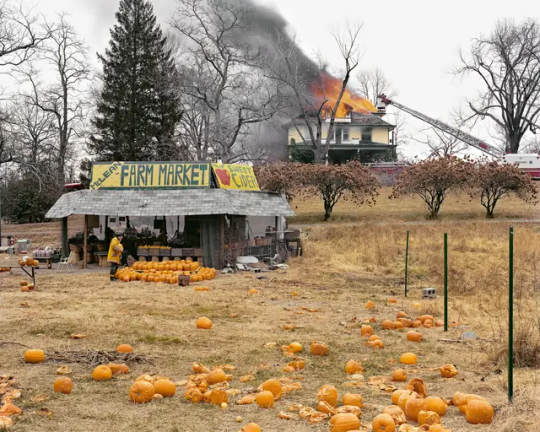
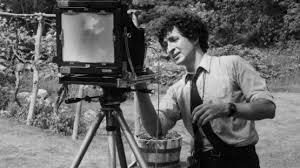
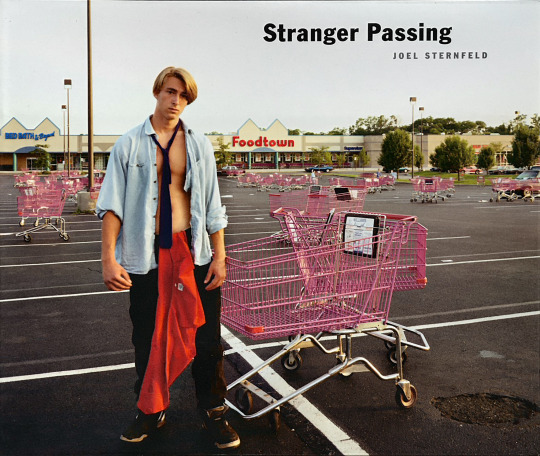
Introduction/Background:
Joel Sternfeld was born on June 30, 1944 in New York City and is an American fine art photographer. He began taking photos in 1970 after earning a Bachelor's degree in Art at Dartmouth College. Before becoming a photographer he also studied the color theory of Johannes Itten and Josef Albers. As a photographer, Sternfeld is concerned with capturing the moments of American utopian/dystopian life. To do this, he focuses on people of all backgrounds, all experiencing a wide range of emotions. This makes most of his photos up for interpretation by the audience as to what identity the people in his photographs possess? Through Joel Sternfeld’s work, “he contributed to the establishment of color photography as a respected artistic medium” (Moma, wikipedia).
Notable works:
Joel Sternfeld has many works that have solidified himself as an impactful artist in the world of photography. These works include American Prospects (1987), On This Site (1996), Stranger Passing (2001), and Sweet Earth (2006). The two works that will be discussed are American Prospects and Stranger Passing. In his project, American Prospects, he focused on photographing American Identity in a “thought provoking yet humorous manner” (Huxley-Parlour, Biography). This was done by capturing people in places that require an implied narrative. His use of color for this project intensifies the reality of everyday life in America making this project all the more thought provoking. Similarly in Stranger Passing, Sternfeld photographs people in the middle of a circumstance that is up for interpretation. One picture from this project that stood out to me was of a woman pumping gas. However she was wearing very colorful and extravagant clothing which causes viewers such as myself to make presumptions on who she is and why she’s wearing such bizarre clothing at a gas station? Having presumptions about the subjects in this project is exactly the type of response that Sternfeld expects and wants. He expects this response in order to beg the questions of, “What happens when we encounter the other in the midst of a circumstance? What presumptions, if any, are valid? And what, if anything, can be known of the other from a photographic portrait” (Augustine, 2012)?
Awards/nominations:
Joel Sternfeld has earned a total of 10 awards so far in his life. This awards consist of the following:
2013, Montgomery Fellowship
2004, Citigroup Photography Prize, in association with Photographers’ Gallery, London, England
1990–1991, Prix de Rome
1987–1988, Shifting Foundation Fellowship
1985, Grand Prize, Higashikawa International Photo Festival
1983, American Council for the Arts Emerging Artist Award
1982, John Simon Guggenheim Memorial Foundation Award
1980, National Endowment for the Arts Photographers Fellowship
1980, New York State Council for the Arts Creative Artist Public Service Fellowship
1978, John Simon Guggenheim Memorial Foundation Fellowship
Personal thoughts:
Although I am no photographer, I am an interior designer and I can see myself using much of Sternfeld's objectives and goals to enhance the quality of my own work. For example, I have a greater understanding of the way an image can communicate to an audience; sometimes more than words can. Just through looking at one image, presumptions and information can be discovered which communicates a strong message. I can use this with Interior Design by taking note of the structure an interior space has, the position of furniture, and where the overall design draws people’s eyes to give people a message of its purpose without the use of words. I respect and admire Sternfeld’s ability to do that and I hope to be able to do that as well in my own work.
Sources:
https://www.moma.org/artists/5656
https://huxleyparlour.com/artists/joel-sternfeld/
https://www.joelsternfeld.net/bio
https://store.luhringaugustine.com/products/stranger-passing
0 notes
Text
Theme Project Proposal
For this theme project I plan to photograph the sport of Ultimate Frisbee. I have been doing ultimate frisbee for a few years now and I didn’t realize how much skill was required for just throwing around a disk until I tried it out. Many people do not recognize this as a sport that should be taken seriously either, so I hope to photograph the sport in action in order to inform people of what ultimate frisbee looks like and maybe even convince people to give it a try as well.
Ultimate frisbee is more than just throwing a disk back and forth, in fact it follows the same goal as most sports do; scoring a point. A point is achieved when a team catches the frisbee in an end zone like in football. Players, however, are not allowed to travel with the frisbee once it’s in your possession and can only pivot with it making sure one foot is planted at all times. The other players are required to get open for a throw and if they successfully catch the frisbee they continue to pass it to the next open player until they score in the end zone. That is the basic idea of ultimate frisbee and photographing a game will give a more visual representation of how the rules play out.
I really want to photograph this subject not only because it’s a unique topic, but also because playing sports has always been a huge part of my life and being around a fun group of people is most of what makes sports fun. Since I am already on a team, getting permission isn’t a problem and I am close with everyone, so I plan to take photos of practices and also at our upcoming tournament. To take these pictures I will show people actually playing the game as it happens naturally. I also want to capture the team having a great time together which I also want to photograph in the moment of it happening. Both of these aspects together highlight what makes ultimate frisbee worth playing and in the end I hope a few people will feel encouraged to join through my photos.
0 notes
Text
0 notes
Text
Elements/Principles of Design Definitions
Elements:
Color: Helps establish a mood for a composition. When light waves strike an object and reflect back to the optic nerve in a human’s eyes, the sensation they perceive is called color.
Space: Refers to the area that a shape or form occupies. Space can be defined as positive and negative. The positive space of a design is the filled space in the design.
Form: Can be created by combining shapes, and it can be enhanced by color or texture. Form is three dimensional, and there are two types: geometric (man-made) and natural (organic).
Contrast: The use of visually different elements. In addition to capturing attention, contrast can guide the viewer’s eye to a focal point, highlight important information and add variety, or even drama, to a design.
Shape: A two- or three-dimensional object that stands out from the space next to it because of a defined or implied boundary. Like form, shape comes in two different types: geometric and organic.
Texture: The way a surface feels, or the way it’s perceived to feel. It has the power to attract or detract a viewer’s eyes, and can be applied to lines, shapes, and forms. There are two types of texture: tactile and visual.
Line: An element of art defined by a point moving in space. Lines can be vertical, horizontal, diagonal, or curved. They can be any width or texture. And can be continuous, implied, or broken.
Point: The simplest type of line and is used to create basic shapes like squares and rectangles. Points are also the building blocks of more complex shapes, which you can make by linking points together.
Principles:
Balance: Refers to the way visual elements are arranged so that their visual weight harmonizes with the other elements in the design, and the composition gives an appearance of properly distributed elements.
Emphasis: The part of the design that catches the viewer’s attention. Usually the artist will make one area stand out by contrasting it with other areas. The area could be different in size, color, texture, shape, etc.
Pattern: The repetition of specific visual elements such as a single unit or multitude of forms. Patterns can be used to create balance, organize surfaces in a consistent manner, or create contrast.
Proportion: Refers to the relationship between one part of a design and another part or to the whole design. It is a comparison of sizes, shapes, and quantities.
Repetition: Means that pictorial elements are completely or partially reused. These can be the same or similar colors in the design, the use of the same or similar lines, fonts, sizes, and textures, or certain shapes of elements.
Movement: Refers to the way the eye travels over a design. The most important element should lead to the next most important and so on. This is done through positioning, emphasis, and other design elements already mentioned.
Unity: All about creating harmony in your designs. It involves using harmonious colors, shapes and textures, balancing positive and negative space, and playing with repetition, proximity and alignment.
Variety: Used to create visual interest. Without variety, a design can very quickly become monotonous, causing the user to lose interest. Variety can be created in a variety of ways, through color, typography, images, shapes, and virtually any other design element.
0 notes
Text

My Family and I decided to drive up to Oakhurst over the weekend to visit some family. We decided to eat lunch before going to the snow so we went to a resturant named Ducey's . The wait took forever and I didn't eat anything yet that day making it more painful of a wait. When we finally got seated I ordered chicken tenders and fries. They were pretty good, especially with honey mustard.

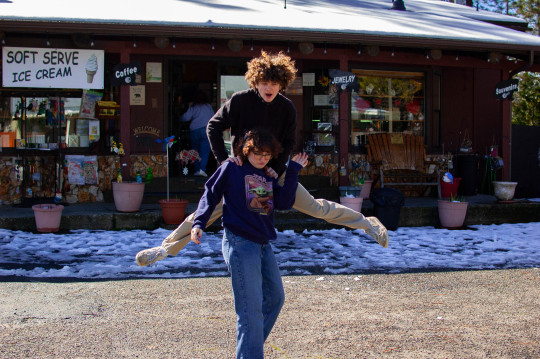

These are my siblings. They are both younger than me and they are always fooling around whether we're at home or out in public. The top photo is a picture of my brother Luke hiding from the camera. He gets camera shy so I was trying to get a photo of him but he turned away at the last second. The middle photo is of my brother and sister trying to pose for the camera and the bottom photo is my sister throwing snow at my brother.
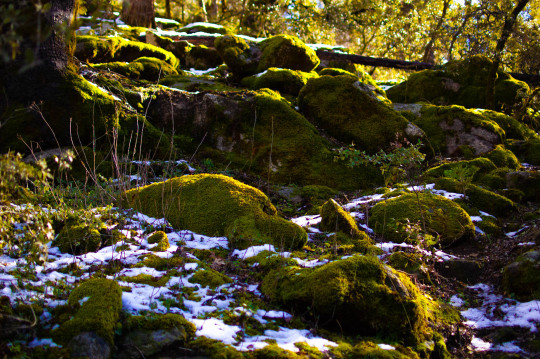
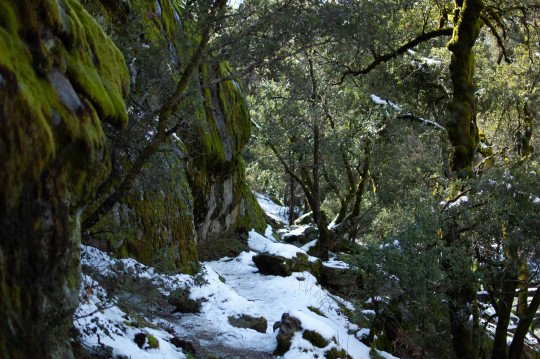

To take these photos, I was dropped off on the side of the road because we could not find parking. So while my mom was driving around waiting for me I found a nice pathway that had some mossy rocks which I thought looked beautiful against the white snow. At the end of this trail was this beautiful landscape which is shown in the bottom image.


We ended the day by going to various thrift and antique shops. My favorite part was the china in the top image. I loved the design of the plates and cups so I photographed it.
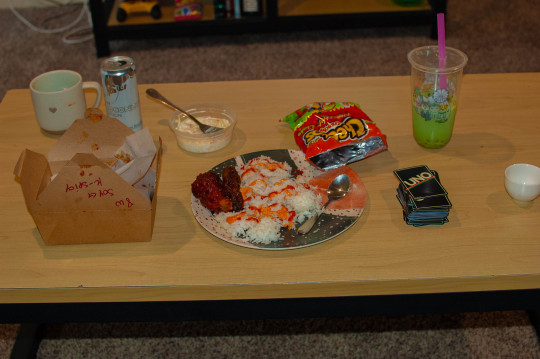
This was photographed the day after, and this was the food I ate while watching the Super Bowl. I decided to go to my friends apartment to watch it. We ate chicken wings, rice, chips, and coleslaw. We only watched the Super Bowl for the halftime show with Usher. Afterwards we decided to play Uno without paying much attention to the game.
0 notes
Text

Hello, my name is Abigail von Ah and I’m a sophomore at Fresno State majoring in interior design. This photo was taken when I volunteered to be the photographer for a missions trip to Africa in 2021. I only learned the basics and never picked up a camera again after that trip, but I hope to become more advanced through this class. My goal is to use the photography skills I learn for taking pictures of interior spaces I will create later on. I also hope that photography can become a hobby of mine as well. A few more things about me is that I love to play sports in my free time, watch tv, listen to music, and sing occasionally. Nice to meet you all!
1 note
·
View note